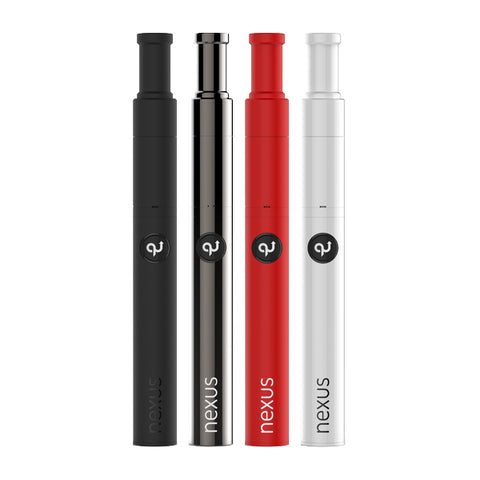
How To: Beginner's Guide to Buying a Vape Pen
By SHANNON GOFFHow To: Beginner's Guide to
Buying a Vape Pen

The vape pen market houses a massive selection of styles, functions, uses and unique devices that can be quite overwhelming to vape pen newbies. Daily High Club knows how intimidating it can be to navigate, so we’ve put together a short series to help you when buying your new vape pen. Check out this Beginner’s Guide to Buying a Vape Pen, and check back next week for DHC’s list of Vape Pen Vocab to help further your understanding of the intricacies of these popular smoking supplies.
When choosing your vape pen, there’s a core list of characteristics to consider:
Vaping material
It’s important to decide what you want to use in your vape pen. Are you going to primarily use dry materials or legal concentrates, or both? There are pens that are designed to handle both, but be sure to do your research as most vape pens are designed to handle one or the other.
If e-liquids or oils are more your speed, look for pens with a tank and an atomizer, or a system of coils and wicks for heating.
For vape pens primarily used for legal concentrates, look for a chamber rather than a tank, as these burn a different way. Pro Tip: Make sure the chamber is easy to clean as legal concentrates tend to leave a more stubborn residue.
If you’re looking for a vape pen to use for dry material or legal herbs, look for a chamber and keywords like “convection” or “conduction heating.”
Heating method
Convection heating takes place when the heat is transferred to the chamber without the vaping material being in direct contact with the heating element. While this heating reduces the risk of extra combustion and wasting vaping material, it does need a little time to heat up. Vape pens that use convection can also be a tad pricier than those that use conduction heating methods.
With conduction heating, your vaping material is in direct contact with the heating element. While this means you can vape pretty much immediately, it's possible to lose ⅓ of what you’re smoking due to increased combustion of your vaping material.
Induction, another type of heating, takes place through magnetic fields. This heating method isn’t as common as the other two, but with the rate of new vape pen conception and production, it probably won’t be long until this is the standard. Especially since this kind of heating gives vaping material even burning with no chance of unwanted combustion.
Battery Life
Most vape pens out there are powered by Lithium-Ion built-in batteries. If you want a vape pen that will last several days (depending on your vaping habits) you may have to get a vaping device with a slightly bigger body. It’s all about what your intent is and how often you want to charge your vape pen, or not charge it. Output is also a factor if you are using your vape pen for e-liquids, as lower resistance coils create more flavor and vapor but also use more power. It's mostly a question of how slim or discreet you want your vape pen to be, and what your vape is being used for (how long you're going to be away from a charger on a daily basis).
Functionality
Another important factor to consider is ease of use, or functionality. There are vape pens that are super simple: put in material, close pen, press button, go! But there are also pens with features like temperature control and programmable pre-sets, or vape pens that can burn all vaping materials instead of just e-liquids or only legal concentrates. The more capabilities a vape pen has can not only decrease ease of use, but increase price. Think about what capabilities you want, how comfortable you are with added features and what price point you’re looking at.
Design
Similar to functionality, design is something that requires special attention when purchasing a new vape pen. Look for stainless steel or carbon fiber materials if you don’t mind upping the cost, or high-quality plastics with Pyrex glass components and ceramic heating elements. If looking at a vape pen with coils and rods, go for titanium or stainless steel coils and quartz rods. Avoid materials like silicon, teflon or titanium alloys as they have a low melting point, making them potentially dangerous.
Budget
Most of the above factors will ultimately depend on this last element: budget. How much you’re willing to spend will largely influence what you buy, and help you narrow down your list of options. A simple, slim, one-button vape pen is going to be way less expensive than a decked-out, stainless steel, multi-material vaping device. But this is a budding industry with new and emerging vape pens rolling out regularly. There are plenty of quality options for a reasonable price, just gotta do some shopping!







